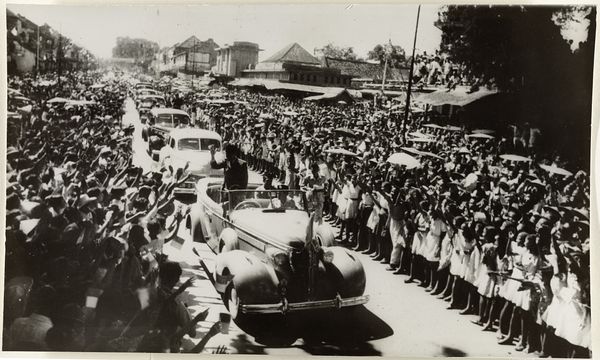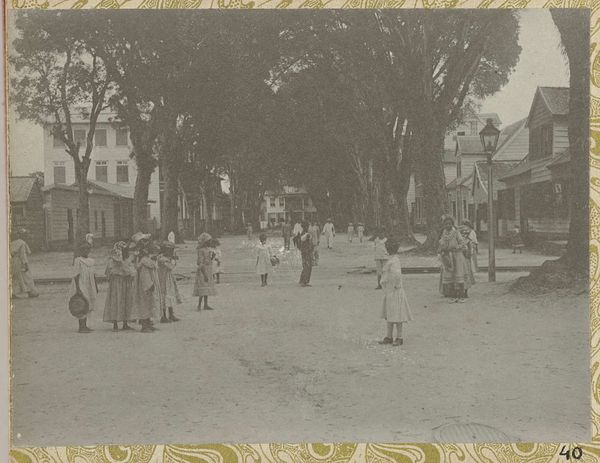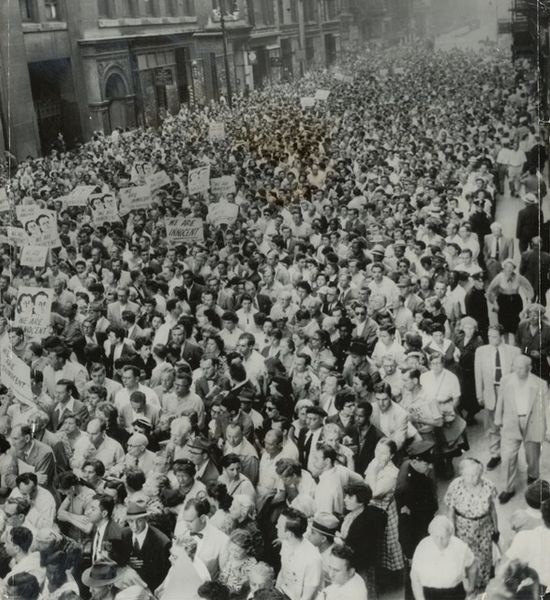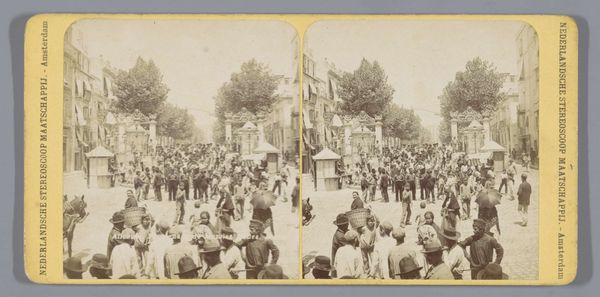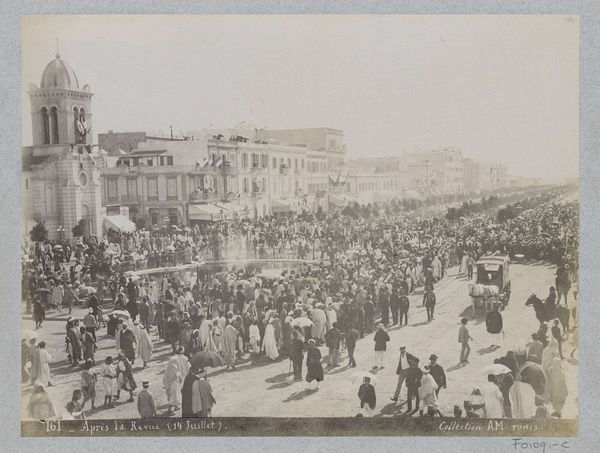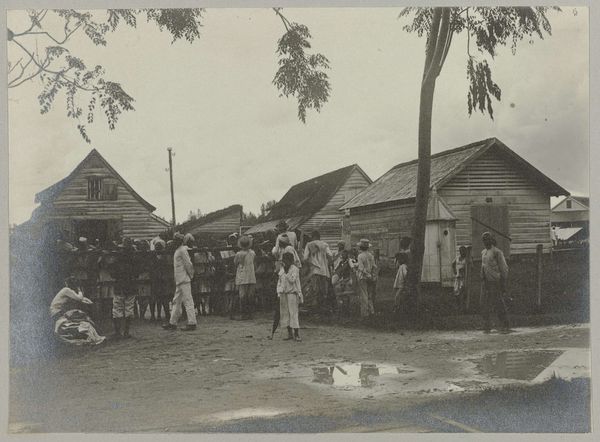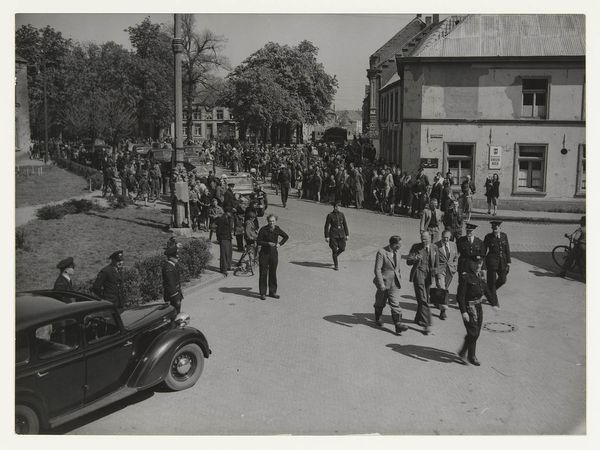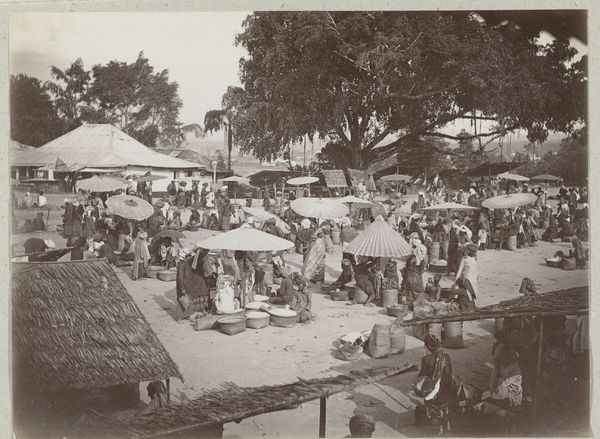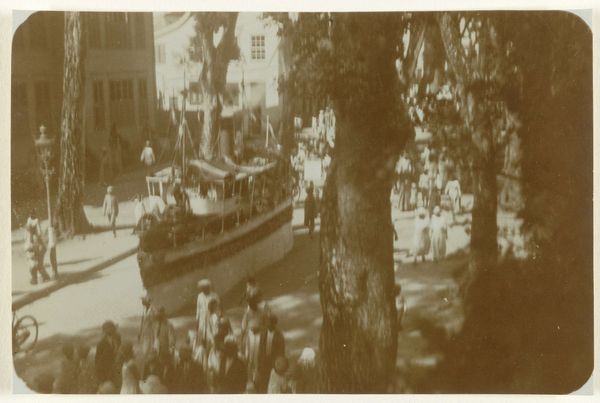
photography
#
landscape
#
street-photography
#
photography
#
cityscape
#
realism
Dimensions: height 120 mm, width 173 mm
Copyright: Rijks Museum: Open Domain
Curator: This is a fascinating image, captured in 1931 by Augusta Curiel. It documents a "Werklozendemonstratie in Paramaribo" - an unemployment demonstration in Paramaribo. Editor: My eye is immediately drawn to the sheer mass of people, but also the formality of their dress. It’s an incredibly powerful image, full of pent-up energy, yet orderly at the same time. The black and white tones add a somber, historical weight. Curator: Indeed. Curiel's work often serves as a crucial window into Surinamese society of this period. What you perceive as formality likely stems from the conventions of dress at the time, but it also underlines the seriousness of their plight. Note the banners they carry. Editor: Absolutely, the signs stating "Steunt de Werkloozen", "Support the Unemployed". Visually, those stark banners really amplify the message and connect with larger, universal themes of injustice and economic disparity. I'm curious about the architectural setting. Curator: The architecture reinforces the image’s social commentary. Paramaribo's colonial architecture—grand, wooden structures—forms a backdrop to this demonstration. It poses a stark contrast between the visible wealth and power structures, and the immediate poverty these protesters face. This photo participates in larger discussions of race, class, and power dynamics within the colony. Editor: The colonial context is everything here. These grand buildings almost become symbols of the obstacles they face. Beyond the written message, do the figures or the overall arrangement hint at specific symbols or cultural meanings inherent in Paramaribo? Curator: That's a worthwhile observation! Consider the act of gathering and marching itself. Historically, collective action has always represented an assertion of rights. We also know that organizing labour movements and protests had very different and significant implications in a colonial society than it might have in Europe at the time. Editor: Looking at it that way deepens the photograph’s resonanc. Curiel, intentionally or not, has composed an image that vibrates with meaning far beyond a simple record of an event. It's a portrait of a society at a critical juncture. Curator: Precisely. The image allows us to consider not just the event itself, but also how visual records become powerful political tools for those struggling for change. It leaves us considering what we can learn from the past, and how those struggles manifest themselves today. Editor: An enduring and potent testament. The layered symbolism certainly gives us a lot to think about.
Comments
No comments
Be the first to comment and join the conversation on the ultimate creative platform.
